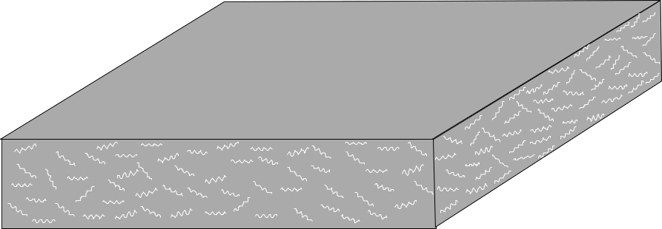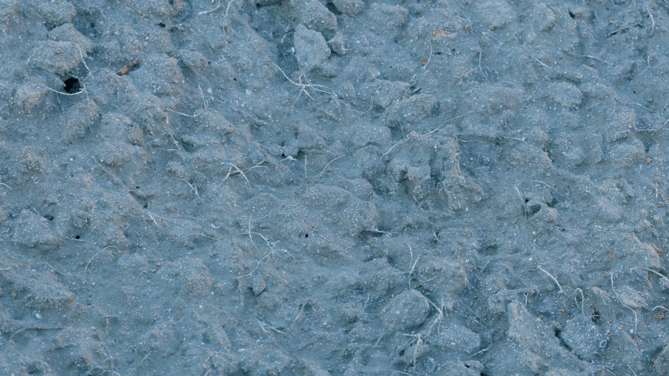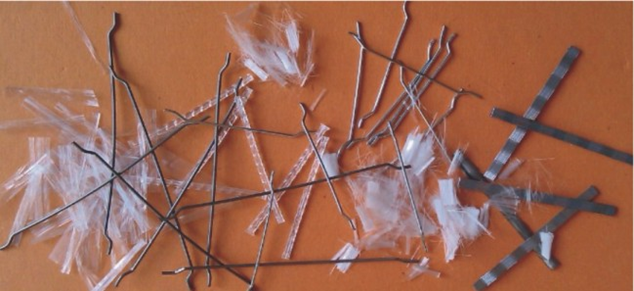
- Products
- Why Nudura
- Nudura Project Applications
- Training Academy
- Resources
- Company
Written by Michael Mahoney, P.Eng. FACI
Traditional concrete has widespread usage across building and roadway construction and is known for its superior structural strength. But what if we told you that it could have even more resiliency without the need for rebar? Fiber-Reinforced Concrete (FRC) technology incorporates micro and/or macro synthetic or steel fibers into the concrete mix itself for added resistance to deterioration, as outlined and specified in ASTM C1116.
What is Fiber-Reinforced Concrete?
 Concrete cracking is not uncommon due to drying shrinkage, structural loads or other forms of stress. The use of fibers in concrete can help mitigate age-related cracking and improve spall protection and freeze-thaw durability. Macro-synthetic fibers, sometimes referred to as structural fibers, can be “engineered to be equivalent to conventional steel reinforcing” when correctly dosed and mixed in concrete.
Concrete cracking is not uncommon due to drying shrinkage, structural loads or other forms of stress. The use of fibers in concrete can help mitigate age-related cracking and improve spall protection and freeze-thaw durability. Macro-synthetic fibers, sometimes referred to as structural fibers, can be “engineered to be equivalent to conventional steel reinforcing” when correctly dosed and mixed in concrete.
Applications for Fiber-Reinforced Concrete
Fiber-Reinforced Concrete has universal applications where strength and crack-resistance are needed, including:
- Vehicular uses such as roadways, bridges, parking garages, and driveways
- Structural walls, including with Insulated Concrete Forms (ICFs)
- Shotcrete for foundations
- Precast concrete
Benefits of Fiber-Reinforced Concrete
Fiber-Reinforced Concrete offers numerous short-term and long-term benefits to the building owner, contractor, and ready-mix concrete producers.
Durability

Most often, fibers added to concrete will not change the behavior of the uncracked concrete. However, if the concrete does crack, the fibers are intended to bridge the cracks and carry the tensile stresses, redistributing the forces to prevent the crack from widening. This load capacity depends on the type of fiber material being used, size, and dosage.
In addition, the replacement of conventional steel reinforcement with synthetic macrofibers eliminates the potential for corrosion within the concrete. The strength of FRC is frequently used in conjunction with ICFs in disaster-prone regions for resiliency to strong winds and debris. The ability to speed up construction with a safer work environment and have less risk of spalling, chipping and cracking leads to reduced costs of ongoing maintenance for the building owner.
For details on specifications and approved design methodologies, refer to the American Concrete Institute’s “ACI 544.4R Guide to Design with Fiber-Reinforced Concrete”.
Time, Labor, and Cost Savings
The use of fiber-reinforced concrete also saves significant time and labor compared to the use of rebar. It minimizes the amount of space needed on the jobsite for the pour and enables applications in virtually any temperature condition. With less time needed for rebar applications, there is less potential for safety risks for the requirement of additional laborers and inspectors on-site.
These reductions in time and labor can be passed along to the customers in financial savings for the completed project.
 Environmental Impact
Environmental Impact
From a sustainability perspective, recycled fibers can be highly advantageous. Some manufacturers offer synthetic microfiber products made from recycled water bottles or recycled car tire rims, minimizing landfill waste, and giving older materials new life.
With the building sector being the largest contributor of greenhouse gas emissions, improving the service life of structures can begin to reduce our carbon footprint.
Conclusion
For more details on fiber types, mixing tips, finishing methods, pumping and more, view Euclid Chemical’s Technical Bulletins related to the successful use of Fiber-Reinforced Concrete for the Ready-Mix Concrete and Concrete Contracting community.
CONTACT US
We’re committed to supporting homeowners and design professionals who are interested in or use our products. We’re always happy to help and provide more information.





